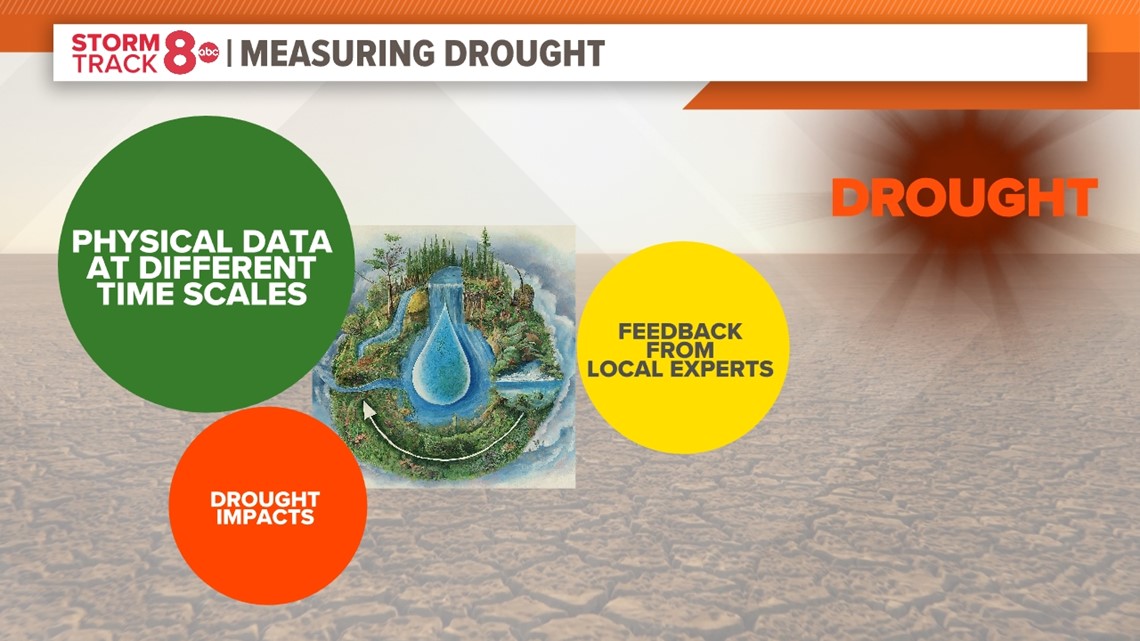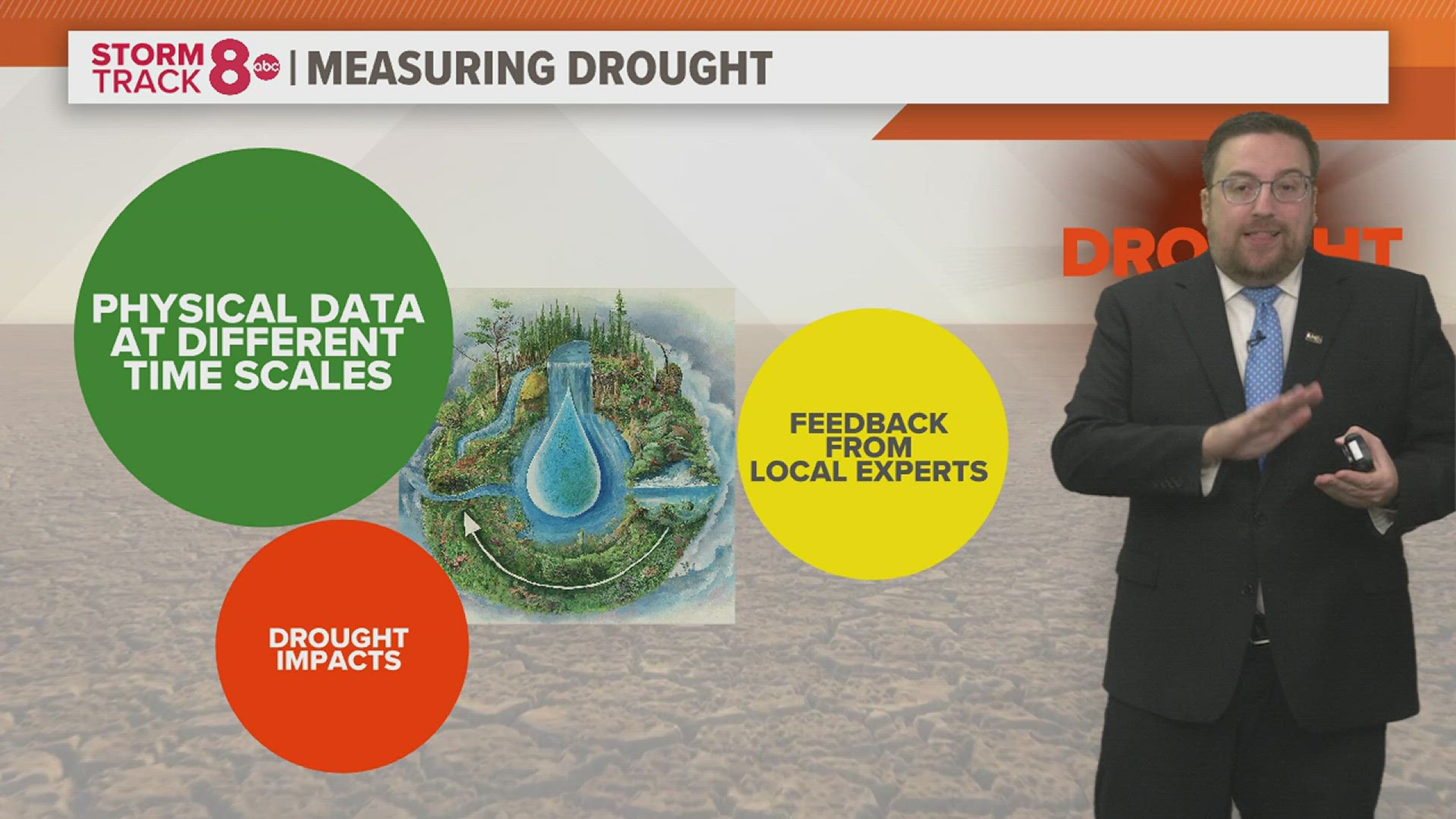MOLINE, Illinois — Dry conditions have cropped up in much of the Quad Cities in early 2024. In much of eastern Iowa, extreme drought continues to rage onward. The lack of consistent snow and rain has led to low moisture levels in our soil. Dave from Ohio, Illinois, asks what factors are used to determine which areas are in a drought and how severe that drought is. Let's dig in!
Drought is more than rain, snow
Measuring drought is a monumental task considering the number of square miles that have to be monitored. That's why the National Drought Mitigation Center at the University of Nebraska utilizes scientists from all across the country in varying fields to complete this task. From meteorologists to social scientists, this team comes together each week to assess drought conditions. Currently, a network of more than 425 observers from across the country supply information about local conditions. Many have been involved for more than a decade. Most work for NOAA, however, others come from the USDA, universities, state governments, or other federal agencies.


It starts with looking at physical data from different time scales, ranging from weekly, to monthly and even seasonally. Normally, when we think about drought, we associate that with a lack of water. While precipitation, such as rain and snow, plays a big role in the creation of the Drought Monitor, many other variables are also highly considered, such as streamflows, reservoir levels, temperature, evaporation rates and even vegetation health. No one piece of evidence can tell the whole story and neither can using only exclusively physical indicators.
The United States Drought Monitor isn't a model itself, but rather a blend of indicators with drought impacts, real observations and even local insight from experts. As with anything weather-related, the more data and factors we have at hand, the more accurate a given situation and even potential forecast will be.
Measuring drought
There are currently four categories used to help us classify how dry a given region is.
- D0: Abonormally dry (not officially considered to be in drought status)
- Going into drought, short-term dryness, fire risk above average, OR coming out of drought with some lingering water deficits.
- D1: Moderate Drought
- Some crop damage, fire risk is high, streams and wells are low, and some water shortages developing.
- D2: Severe Drought
- Crop loss is likely, fire risk is very high, water shortages are common, and water restrictions are imposed.
- D3: Extreme Drought
- Major crop losses, extreme fire danger, widespread water shortages, and restrictions.
- D4: Exceptional Drought
- Widespread crop losses, exceptional fire risk, and water shortages create water emergencies.
The final product
Once all of the local data is complied it can then be broken down into a national map, showing the different severities and locations of drought conditions. Each map is hand-drawn weekly and is an update from the previous week's map.


One thing to remember when looking at the drought monitor, like the one pictured above, is that the data is often delayed by a week or two. For example, if you are in drought conditions on one update, and receive a lot of rainfall the following day, it won't show up until about a week or two after if there was any improvement in conditions.
Also, the drought monitor is not a forecast, but rather a snapshot in time of what drought conditions were on a given day.
Have a question that you would like me to answer for an upcoming Ask Andrew segment? Submit it, here!

